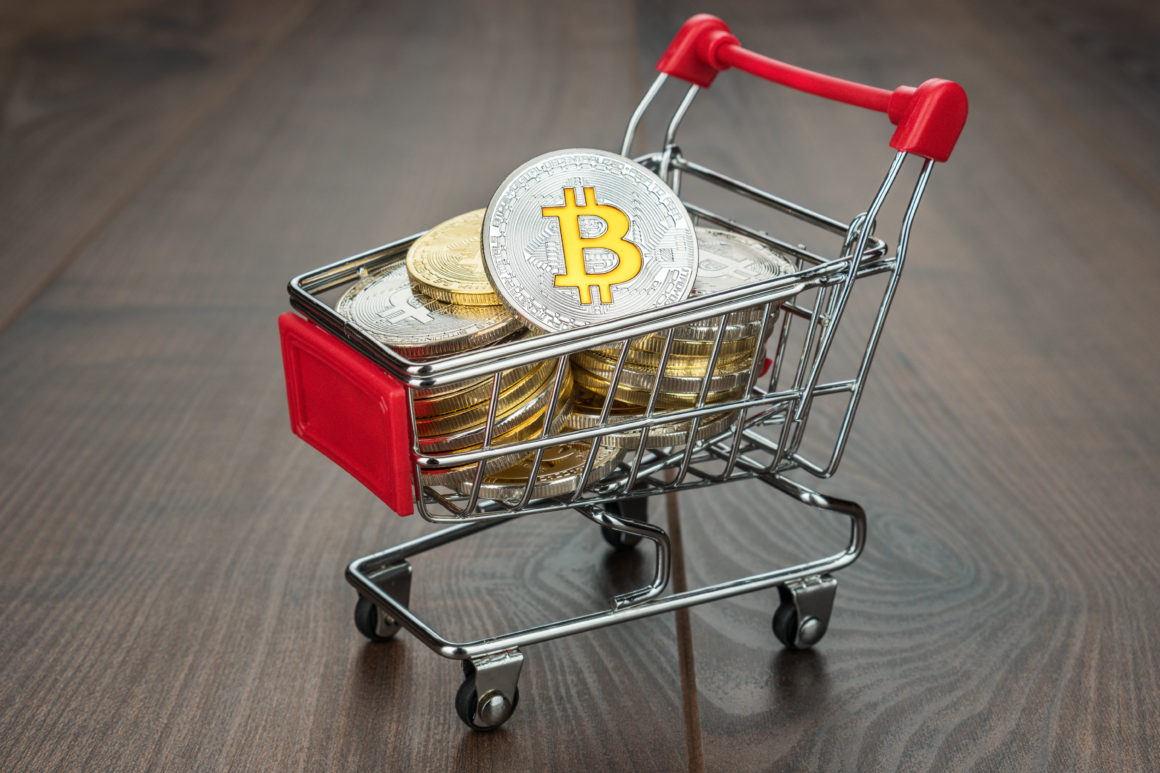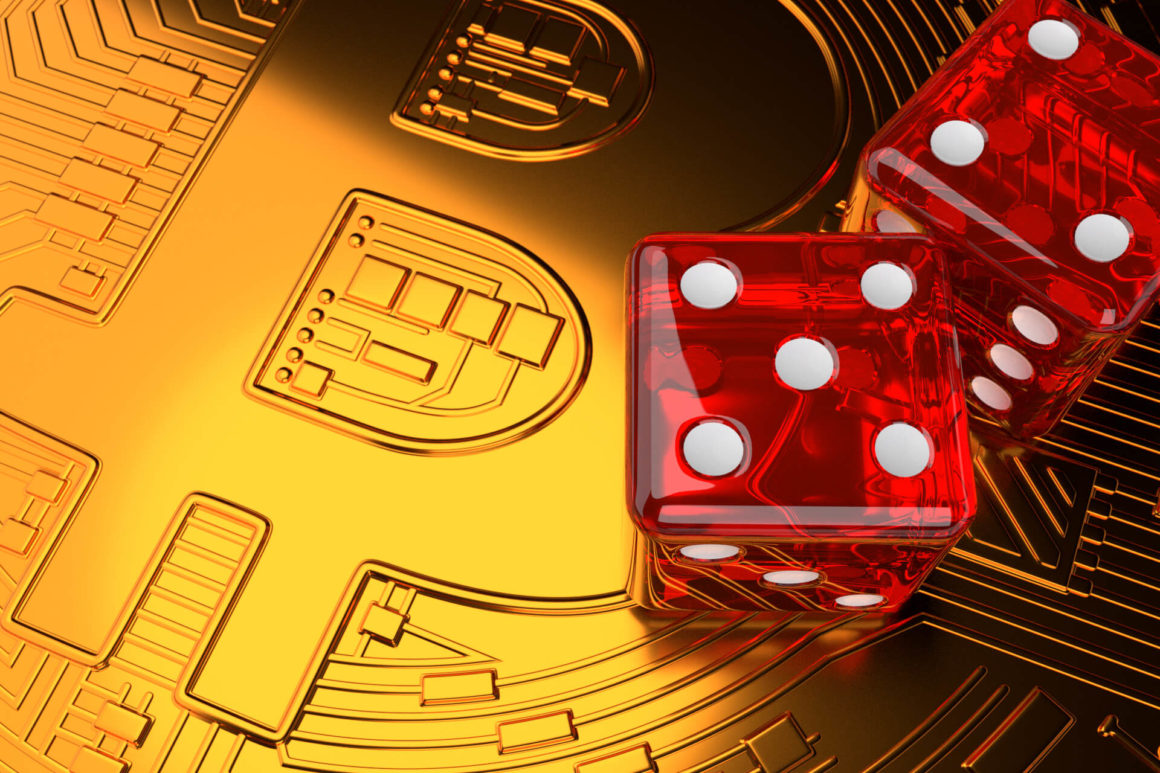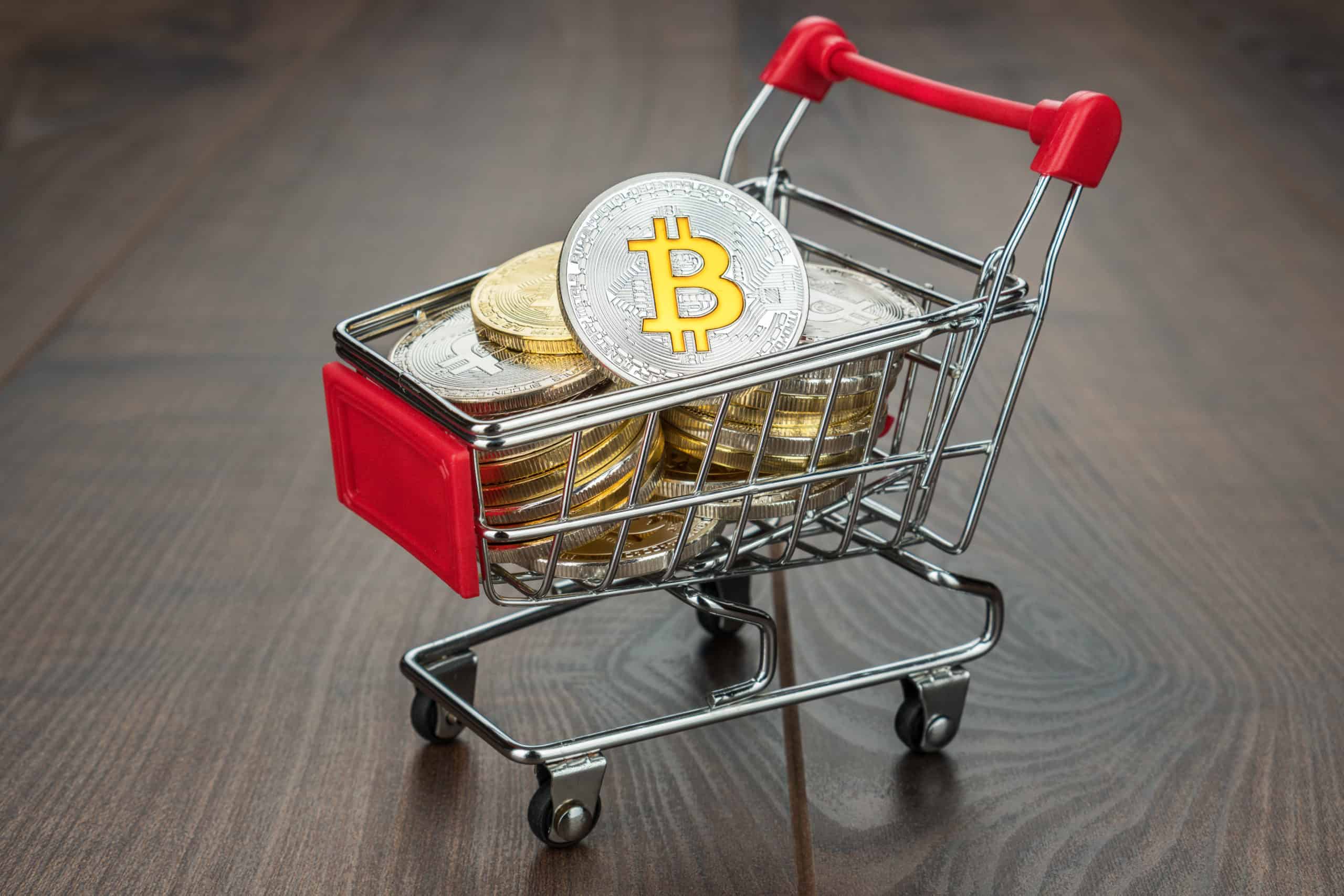In this issue
- Singapore, other sovereign wealth funds want a piece of Bitcoin
- Cryptos rise as sun sets on Bitcoin and Ether options
- What in the world is not (yet) an NFT?
- Elon Musk, Twitter’s Simon, says: ‘Don’t defy DeFi’
- China opens DCEP digital yuan to the masses
From the Editor’s Desk
Dear Reader,
Bitcoin can be a messy business. Especially if you’re in the business of managing other people’s money. Most retail cryptocurrency traders aren’t held to the higher risk and compliance standards that institutional investors and sovereign wealth funds might have. For example, you want to be sure that somewhere in that transaction thread, the digital asset wasn’t held by a rogue nation currently on an international embargo list. You just don’t want that liability or exposure. While most people likely won’t care about who used to hold that Bitcoin, for institutional investors and governments, it is very important.
As we cover in this week’s Current Forkast, it makes total sense that Singapore’s sovereign wealth fund, Temasek, is reportedly now buying virgin Bitcoin directly from miners. There likely is also value in paying a premium for freshly mined and therefore, clean, Bitcoin. History can be sordid after all. The move also suggests that if one cares enough about the provenance of the Bitcoin, the plan might be to hold onto it for a while. And one only holds onto an asset if one thinks the value of that asset will climb in future. But your guess is as good as mine.
With more governments getting into crypto action, including New Zealand offering up Bitcoin alternatives for KiwiSavers (its national retirement savings program), the moat around Bitcoin and other cryptocurrencies might be extending. Ray Dalio expressed concern that all of this could be outlawed by governments. But with more governments and citizens with skin in the cryptocurrency game, that scenario may only be just that… a concern, nothing more.
Until the next time,
Angie Lau,
Founder and Editor-in-Chief
Forkast.News
1. Governments now want in on crypto investing

By the numbers: Temasek — 4,000% increase in Google search volume.
New York Digital Investment Group CEO Robert Gutmann revealed that his company has been in talks with sovereign wealth funds on Bitcoin investments during a podcast conversation hosted by Real Vision CEO Raoul Pal. Pal also confirmed Gutmann’s story revealing that Singapore’s sovereign wealth fund Temasek Holdings has been purchasing so-called virgin Bitcoin straight from miners.
- New Zealand-based wealth management fund NZ Funds Management has invested 5% of its KiwiSaver growth fund into Bitcoin. KiwiSaver is a retirement-focused savings scheme set up by the government and managed by independent savings providers.
- While several signals are hinting for bullish developments, Ray Dalio, the billionaire founder of the world’s largest hedge fund Bridgewater Associates, alluded to the gold ban of 1930. “Also outlawing Bitcoin is a good probability,” Dalio told Yahoo Finance.
- Meanwhile, Ethereum just received a major nod from Visa, which will start crypto settlements in Centre consortium’s USD Coin (USDC) — an ERC-20 stablecoin with a 1:1 peg to the U.S. dollar that runs predominantly on the Ethereum blockchain.
Forkast.Insights | What does it mean?
The news that governments are considering investing in Bitcoin via their sovereign wealth funds (SWFs) could be a huge bullish indication for the premier cryptocurrency. Unlike other funds held in central banks to manage the value of its nation’s currency, stimulate the economy, or prevent inflation — sovereign wealth funds are used by governments solely to earn the highest possible return.
With Bitcoin gaining almost 500% since its incredible bull run began in October 2020, led by a wave of institutional and retail investment and reaching a new all-time high of over $60,000 per BTC earlier in March — Bitcoin now has a market cap of over $1.08 trillion.
The combined capital held by the world’s largest sovereign wealth funds was reported to be around $8.1 trillion in 2019, more than double that of all hedge funds combined. Just 1% of this money flowing into Bitcoin would essentially double its market cap and by extension its price.
As RealVision CEO Raoul Pal confirmed, Temasek Holdings — an investment firm owned by the Singapore government that manages a net portfolio worth $306 billion — is already buying Bitcoin directly from miners.
According to Mike McGlone, commodity strategist for Bloomberg Intelligence, the news of sovereign fund interest in Bitcoin potentially indicates “a major evolutionary shift” which could see the leading crypto asset increase by 630% from its current price before 2021 expires — this would mean a Bitcoin price of around $400,000.
McGlone tweeted, “Bitcoin in Transition to Risk-Off Reserve Asset: BI Commodity — Well on its way to becoming a global digital reserve asset, a maturation leap in 2021 may be transitioning Bitcoin toward a risk-off asset, in our view.”
Meanwhile, Ray Dalio — founder and co-chairman of Bridgewater Associates, the world’s largest hedge fund — has once again warned that governments may try to outlaw Bitcoin and cryptocurrencies. Dalio said last Wednesday that Bitcoin has “proven itself” over the last 10 years but could face government intervention similar to the 1930s ban on owning gold — a time when governments did not want gold to compete with money or credit as a store of value.
“Every country treasures its monopoly on controlling the supply and demand,” Bridgewater Associates’s Dalio told Yahoo Finance. “They don’t want other monies to be operating or competing, because things can get out of control. So I think that it would be very likely that you will have it under a certain set of circumstances outlawed the way gold was outlawed.”
Dalio highlighted reports of the state-proposed Bitcoin ban in India as potentially laying the groundwork for a more widespread global crackdown on Bitcoin.
Although previous attempts by governments — notably China in 2017— to ban Bitcoin have been largely unsuccessful, it is difficult to predict the outcome should the U.S. head towards a Bitcoin clampdown.
“[We] have to see what [reports of a proposed bitcoin ban in India] means,” Dalio said. “Now, can they do it? Yeah. Now we get into the particulars. My understanding from people who are sort of in government surveillance is yes, they can understand, they can track it. They can know who’s dealing with it … I would suspect it would be very hard to hold up against that kind of action.”
2. Bitcoin rises on options expiration

CC BY-ND 4.0
By the numbers: Bitcoin option expire — over 5,000% increase in Google search volume.
Over US$6 billion worth of Bitcoin and Ethereum options contracts expired on Friday, March 26, contributing to the recovery of Bitcoin prices back above US$58,000, as of publishing time, after tumbling below US$51,000.
- Most of these contracts were held on the Panama-based options and futures exchange Deribit. A total US$6.4 billion worth of Bitcoin and ETH options and futures expired on the exchange, which includes US$5.34 billion worth of Bitcoin contracts.
- “[Max pain] for 26th is $44k, which does not mean the market will move to this level, but it does imply that after Friday this potential downward pressure is gone,” Deribit tweeted.
- A futures contract is an agreement that obliges traders to buy or sell an asset dictated by the contract at a certain price before a specified date in the future. An options contract allows the trader to choose whether he or she would buy or sell the asset.
Forkast.Insights | What does it mean?
The bulls are back. After Friday’s expiration of US$6 billion worth of bitcoin options, bears were into retreat. Even ahead of the record expiration, according to bybt.com, 43% of options contracts were already deemed worthless. In essence, investors that held these positions made the wrong bet, either that 1. the strike price to buy would be higher than what Bitcoin traded for or 2. the strike price to sell was going to be lower than what Bitcoin was priced at. Because why pay more, or sell your Bitcoin (the underlying asset for which you’ve made your options bet) for less? Better to let these options contracts expire.
What traders are anticipating now is what the markets saw after the last round of expirations: more volatility. But also, potentially more room to climb higher.
With Visa and now PayPal letting customers use Bitcoin and other cryptocurrency to cover purchases of everyday goods and services, not to mention sovereign wealth funds’ desire to expand into crypto, mainstream adoption seems closer by the day. Add Fidelity’s and Goldman Sachs’ latest Bitcoin ETF filing, that’s a lot of increased interest in Bitcoin. With it comes increased liquidity and demand for the cryptocurrency.
The bulls were proven right this last round, and as new bets are made, the market is waiting to see how far Bitcoin has to go. According to Glassnode, a number of option traders are betting the next strike price for Bitcoin is US$80,000 by May 2021. Crypto winter may now be a distant memory for many. Spring has arrived, and the market is anticipating a wild April.
3. Should this photo below be an NFT too?

By the numbers: NFT — over 5,000% increase in Google search volume.
NFT fever is infecting the world, from junk food to brain food. Every news organization is reporting on non-fungible tokens nowadays, including The New York Times, which took it a step further after its technology columnist Kevin Roose sold an NFT of his column titled “Buy This Column on the Blockchain” for US$560,000. The proceeds were donated to The New York Times Neediest Cases Fund. Food companies are also embracing in on NFTs.
- “I’ve had some strange experiences in my career as a journalist. But nothing even remotely prepared me for the experience of watching total strangers competing to spend hundreds of thousands of dollars for a picture of my words,” Roose wrote in a follow-up to his column on NFTs.
- Time Magazine also auctioned off three digital magazine covers for a total of 241 ETH, or about US$378,190, and a collection of these three covers for 35 ETH, or US$54,924. Time has since added five more covers as NFTs to sell in marketplace SuperRare.
- Potato chips maker Pringles also introduced a new digital-only “flavor” — CryptoCrisp. The newest addition to the company’s product lineup is a red-tinged “virtual flavor” in the form of a non-fungible token (NFT) created by Ukrainian artist Vasya Kolotusa.
Forkast.Insights | What does it mean?
Non-fungible tokens (NFTs) are certainly the hottest trend in the cryptocurrency world at the moment. But an in-depth Forkast.News examination of the NFT phenomenon has found that its explosive prices and real worth may also be questionable.
The trend is not only confusing for those who wonder why so much money is being spent on the NFT’s accompanying computer code — which is what makes an NFT unique — when the underlying artwork or pro basketball video itself often can be viewed by anyone online for free.
NFTs are now also drawing the attention of regulators due to their potential for money-laundering and creative approaches to their issuance. Last week, U.S. Securities and Exchange Commissioner Hester Peirce warned that some NFT issuers are pushing the legal boundaries in the types of NFTs they’re putting out to market. As NFTs are designed to be unique and non-fungible, Peirce said they are less likely to be securities by the SEC. However, considering the creative approaches some issuers have been developing, people should be asking questions.
In short, Peirce warns that issuers of non-fungible tokens must take care to not create investment products when selling fractions, or derivatives, of these digital collectors items. An example of this may involve the biggest NFT sale to date, which occurred just over two weeks ago with the sale of digital artist Beeple’s “Everydays: The First 5000 Days,” for an eye-watering US$69 million. While the sale was initially hailed as historic for achieving the third-highest auction price ever for a work by a living artist, it was later revealed that auction winner Vignesh Sundaresan (Metakovan) had an existing working relationship with Beeple. Sundaresan also oversees an NFT investment fund, which would benefit from greater demand for NFTs and higher NFT prices. By purchasing the piece, Sundaresan drove up the price of an NFT bundle product that both he and his NFT business can profit significantly from.
As evidenced by the current craze, there is now so much money involved in the NFT market that experts believe the market has become rife with opportunities for bad actors, despite no punitive action yet taking place.
Whatever your opinion on NFTs, more and more companies and celebrities continue to drive the movement forward. Even the venerable New York Times has hopped on the NFT gravy train (albeit for charity). Aside from Pringles, Taco Bell and Pizza Hut are also cashing in on NFTs.
4. Elon’s latest decree: Don’t defy DeFi

By the numbers: Don’t defy DeFi — over 5,000% increase in Google search volume.
Before this Spring of NFTs, it was last year’s Summer of DeFi (decentralized finance) — which received a big new publicity boost this past week from Tesla CEO Elon Musk, who continues to take Twitter on his voyage of the blockchain space beyond the world of Bitcoin. Musk, who has endorsed Dogecoin and whose Tesla company has started accepting Bitcoin as payment for its electric cars, has already dipped into the world of DeFi after almost selling an NFT on the Valuables platform.
- Valuables is a decentralized application that allows the minting and sales of tweets as NFTs on Polygon — formerly known as Matic Network — which is a layer 2 scaling service for Ethereum and allows the creation of dApps including DeFi.
- Since Musk’s March 25 tweet, total value locked in DeFi climbed from just under US$39 billion to over US$44 billion as of publication time.
Forkast.Insights | What does it mean?
Elon Musk is once again moving the cryptocurrency market on Twitter as was the case when he singled out Dogecoin and Bitcoin in tweets earlier this year to the benefit of both cryptocurrencies’ short-term prices. This time the Tesla CEO tweeted a positive endorsement of the booming decentralized finance (DeFi) ecosystem.
Following Musk’s“Don’t defy DeFi,” tweet on March 25, trading activity in DeFi tokens surged immediately, and the overall market cap across the sector has grown from around $78 billion to over $95 billion in the last six days, according to CoinGecko data.
Musk’s tweet appears to have also been bullish for Ethereum — the blockchain upon which most of DeFi and decentralized applications (dApps) are built — as the cryptocurrency has also surged by 7.52% over the last week.
While Musk’s influence is unquestionable, the movements he generates with his tweets is also indicative of the growing importance that social media sentiment has for modern traders, particularly the new breed of millennial investors who have found themselves working from home due to Covid-19, with extra stimulus cash, and more ready access to stock and cryptocurrency markets than ever before.
In a recent interview with Forkast.News, Tron CEO and founder Justin Sun said that he believes the social media influences on investing will only grow. “This is like the future generation. People are going to invest based on these kinds of sentiments in the first place. And all the stocks they’re going to pay attention to are the ones that really have social media traction,” Sun said. “Even Coinbase started to talk about [making] their roadshow on Reddit, instead of a physical or traditional channel roadshow in the future. I believe, in the future, we’re going to even see a very big company’s CEO do their AMA on Twitter or Telegram instead of traditional phone call channels with investors from investment banks.”
5. Big milestone for China’s DCEP digital yuan

China’s central bank digital currency, the fruit of its DCEP (Digital Currency, Electronic Payments) project that has been seven years in the making, has reached a new milestone: China’s citizens are now able to apply for digital yuan wallets at six major state-owned banks in cities including Shanghai, Beijing, Shenzhen and Chongqing, according to Security Daily, a government-owned financial newspaper.
- People who want to apply for a digital yuan wallet do not need to bring an ID card or bank card, but only need to write down basic information — such as their ID number and phone number — to complete the application, according to Security Daily.
- To give people incentives to sign up for digital yuan wallets, the state-owned banks — Bank of Communications, Postal Savings Bank of China, Industrial and Commercial Bank of China, China Construction Bank, Agricultural Bank of China and Bank of China — are running promotions. Bank of Communications is offering 30 digital yuan “red envelopes,” worth about US$4.57, for people who open a digital yuan bank account there. Construction Bank of China is offering 150 digital yuan, or about US$22, in discount coupons for selected shopping malls in Shanghai, according to The Paper, a Chinese digital newspaper run by the Shanghai United Media Group.
- Now, anyone can open a digital yuan wallet without invitation. In the past several rounds of digital yuan testing, only people who registered in advance and won a lottery were invited to open and use DCEP wallets.
- At the same time, Mu Changchun, director of the Digital Currency Research Institute of the People’s Bank of China, said recently that DCEP wallets “will coexist and cooperate” with paper money and e-wallets for private retail payment systems, including AliPay and WeChat Pay, in the future.
Forkast.Insights | What does it mean?
The move to allow just about any Chinese citizen to apply for a digital yuan wallet is part of the government’s wider push for the adoption of its central bank digital currency — known colloquially by its original project name, DCEP.
With the immense popularity of private digital currencies like Bitcoin and Facebook’s 2019 announcement of the launch of its cryptocurrency, Libra, a project that has since been renamed Diem, world governments quickly realized the importance of protecting themselves against these unique threats to the control and issuance of money.
As the world began the pivot to digital currencies, China was already well ahead of the pack and has remained at the forefront of the central bank digital currency (CBDC) race.
In fact, China’s path towards the digital yuan began long before most of its global competition had even begun to take notice of the need for a CBDC. In 2014 — five years before the announcement of Libra — Zhou Xiaochuan, then-governor of the People’s Bank of China, established a Digital Currency Research Institute. By 2020, China had already issued 30 million worth of digital yuan to citizens of Shenzhen and Suzhou, selected via digital currency lotteries.
The announcement that just about anyone with access to a major state-owned bank can now apply for a digital yuan wallet further opens up China’s new digital yuan market to the masses and represents a new milestone in the nearly seven years-worth of concerted efforts by the Chinese government to bring its DCEP project’s digital currency to market.
China’s push to bring about a digital yuan, whose official name is now e-CNY, is a stark contrast to the United States, which has adopted a more cautious approach toward the possibility of a digital dollar. While China has strived to be the first major economy to issue a functioning sovereign digital currency, Jerome Powell, chairman of the U.S. Federal Reserve, stated in October last year that the United States has “a highly banked population so that many — although not all — already have access to the electronic payments system,” before adding: “We do think it’s more important to get it right than to be the first.”
While slower off the mark, the U.S. has been closely following China’s push towards a digital currency with growing concern. In fact, last year a U.S. Senate hearing was held to discuss how a digital dollar could maintain its dollar’s position as the global reserve currency, particularly in the face of China’s growing influence.
But CBDC watchers should not expect any big movements from the U.S. soon. Just last week, Powell reiterated the U.S. central bank’s position and responsibility to maintain stability above all, due to the global implications a digital dollar would have on the markets.
“Because we’re the world’s current principal reserve currency, we don’t need to rush this project and we don’t need to be first to market,” Powell said, to an audience of central bankers at a conference held last week by the Bank for International Settlements. “A dollar CBDC would have potentially large implications here and around the world, and we’ll be sure to think carefully about all of that and engage very broadly with the public around the world, in particular here in the United States, before we even approach a decision.”




